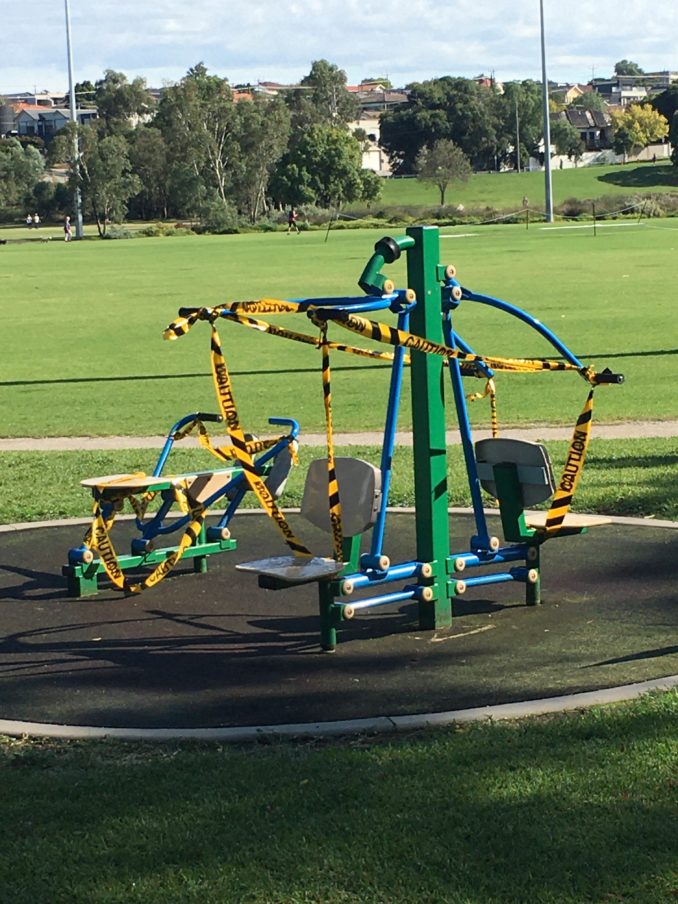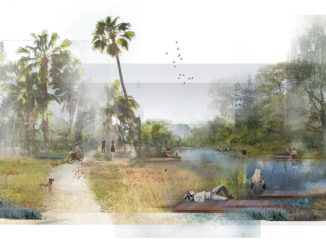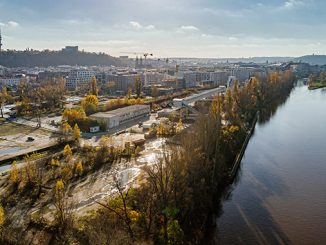Over the past few weeks, we have seen the perceptions of risk and safety change from simple physical (social) distancing and washing hands to complete lockdowns. Social distancing is a term that many of us didn’t know until recently and it is this mitigation method that has had a major immediate impact on cities. As stated in my recent article, Is density to blame? Cities thrive on the social interaction between people otherwise they are merely deserted built landscapes and the change to social distancing have had an impact on how we interact.
People have retreated to their homes from our roads, plazas and sometimes parks in isolation to reduce the impact of this pandemic. We are all expected to adhere to a new social contract of keeping our distance and not gathering in groups, however, this does not mean that we cannot interact with those we do meet. On my own morning or evening walk (allowed during the stay at home requirements in Australian cities), most people abide by the new social contract that you or the other person will move to the side to keep the required 1.5m distance. Although in the past, you would have closely passed each other without a word spoken, now there is often a “good morning” or “how are you going?”, there have also been people waving from verandahs and gardens as you pass by. These have also been street and apartment happy hours where people grab a chair and sit in their front path or balcony and people interact by chatting to each other across the way or they walked down the middle of the road to chat with their neighbours[1]. People are looking for human interaction whenever possible due to enforced social distancing and the human need to connect with each other and the community.

The long-term impacts will only be known in the months and years to come and we can seek to draw on the past examples of wars, 9/11 and various terrorist attacks. However, these were all human and visible threats and often resulting in physical changes (bollards, walls, etc) to cities whereas COVID-19 is an invisible threat. We need to look to more recent epidemic and pandemic examples of HIV/AIDS, H1N1, and SARS which were also invisible but had a significant impact on our perceptions of people and place.
The impact of the invisible virus will most likely manifest itself in people as perceptions of risk and whether they feel safe to return to the streets, subways, plazas, workplaces and civic life. There may be a stigma about certain cities, places, and communities due to the association with the virus [2] [3] and it will be up to cities to reassure residents that they are safe and can return to their (new) ‘normal’ lives. However, it will take time for people to return, especially to areas of shared space and social gathering. We can see this in Taiwan after the SARS outbreak [4] where public transport ridership numbers took an extended time to return to peak numbers due to the stigma of gathering in large groups.
The stigma may be more prevalent with COVID-19 as people in various countries already have access to proximity apps that have mapped exposure site data providing notifications of hot spots and provide a rating for exposure[5]. However, we need to as come together as a collective to support those people and communities impacted by COVID-19.
From what we are seeing in Beijing, Shanghai and other major Chinese cities it will take time for people to feel safe to return to shopping centres, restaurants, cafes and plazas. Many are venturing out to work, bringing their lunch to the office and then returning directly to home at the end of the day [6]. This may change over time when people no longer need to have their temperature and health app check but this will most likely be months away.
My hope is that the current restrictions on movement and perceptions of our cities are merely for the short-term and that we do not see any governments or interest groups attempt to use this unfortunate historical event as an excuse to regulate public spaces as it will greatly change the way we live in our cities.
The questions we will face when the threat of COVID-19 is gone is how can we make people feel safe to return to their community spaces? How can we make sure we lessen the stigma? How can we ensure participation in civic life? The scenarios we face are complicated and nuanced and will differ from city to city, however, what we have learnt from past experience is that people are resilient, and we should have hope that when this passes we can help people reengage in community life and enjoy living in their cities and landscapes.
Article Written by Damian Holmes is the Founder and Editor of WLA.
[1] Rodell, Besha, How Australians Seek Connection in Isolation. https://www.nytimes.com/2020/04/02/world/australia/australia-coronavirus-social-distancing-socializing.html Published 02 April 2020. Accessed on 03 April 2020.
[2] Jiang, X., Elam, G., Yuen, C. et al. (2009). The Perceived Threat of SARS and its Impact on Precautionary Actions and Adverse Consequences: A Qualitative Study Among Chinese Communities in the United Kingdom and the Netherlands. Int.J. Behav. Med. 16, 58–67 (2009). https://doi.org/10.1007/s12529-008-9005-5
[3] Yuen Man Siu (2007). From an Epidemic to Mass “Panic”: the Cultural Construction of the SARS Epidemic in Hong Kong. PhD Thesis, School of Population Health, The University of Queensland.
[4]Wang KY (2014). How Change of Public Transportation Usage Reveals Fear of the SARS Virus in a City. PLOS ONE 9(3): e89405. https://doi.org/10.1371/journal.pone.0089405
[5] Kamel Boulos, M.N., Geraghty, E.M. Geographical tracking and mapping of coronavirus disease COVID-19/severe acute respiratory syndrome coronavirus 2 (SARS-CoV-2) epidemic and associated events around the world: how 21st century GIS technologies are supporting the global fight against outbreaks and epidemics. Int J Health Geogr 19, 8 (2020). https://doi.org/10.1186/s12942-020-00202-8
[6] Matsuda, Naoki. China’s retailers face hard truth: If you reopen, they won’t come. https://asia.nikkei.com/Business/Retail/China-s-retailers-face-hard-truth-If-you-reopen-they-won-t-come Published 03 April 2020 06:25 JST. Accessed on 03 April 2020.



